|
It’s time for me to come clean on the reality of my life. Three of the last four years have been overfull for me. I began teaching at a private school in the fall of 2012 teaching 4 lab sciences for which I had to collect or create curriculum. I also had to inventory the equipment and supplies that were in my room; reorganize the chemical storage area to a compliant state; create a chemical inventory; be the janitor of my classroom with a lab that had to be upgraded for safety measures; while attending college to learn Physics so I could turn around and teach it. I also had to become comfortable teaching Chemistry along with chemical handling and disposal processes. I worked 80 hours per week for the duration of the year. I continued doing massage work and my work as a CFO with our corporation. Top it off with completing my Masters in Education that year. I was squeezing in rides when I could in hopes of managing the stress. The following school year was a bit better doing 60 hour weeks by teaching only 3 subjects which created more open time in my life. I was able to ride more which brought me to my last blog entry where I talked about how I wasn’t feeling so fantastic and had increased my carbs with good results.
That entry was in June 2014. In July before leaving on vacation, I had a hair analysis done. When we returned from our vacation I found out I was in moderate adrenal fatigue and all the summer riding was adding stress to my body that was making my situation worse! Just when I thought I was doing great! Life-change was now required! I was swept into a new job teaching at a public high school shortly after our vacation. My world went crazy with this very sudden change, but my new job provided much relief in the way of overall work requirements and my weeks sank to 45-50 hours. This greatly reduced my stress load. From the results of my hair analysis I was instructed to stop heavy exercise, change back to a carb based diet and given a supplement and activity schedule to follow. I made some of the changes that were reasonable for my life. I experimented with how much exercise I could do and still feel normal rather than feeling like I had the flu the next morning. The supplements and dietary changes left me feeling worse than I’ve ever felt long past any adjustment or detox phase. I spent a great deal of time figuring out what I COULD do rather than what I COULDN’T do. This helped my emotional and mental condition in this situation. It is hard to just stop doing things you enjoy that have become a part of your life. Long story short, this break from activity and diet change caused a 10 lb. weight gain! Right back to where I was before ketosis. Determined to heal up rather than worrying about my weight, my New Year’s mantra became: Do less and sleep more. I found I had to take rides to clear my system now and again, so I did ride. In the late Spring, I was wondering if taking amino acids and body builder supplements might be of help to grow new muscle and provide some of the missing pieces from a long period of high stress. I also returned to my high fat diet after my massage therapist told me I had moved backward two years in progress being on a carb-based diet again. Where I am at now? It's summer break for me and I have spent these first 6 weeks doing heavy duty yard work and landscaping in our yard and reorganizing our home. This has proved hugely rewarding and helped me regain my clarity of mind. I did not realize how much the undone work was actually impacting me mentally and emotionally. I have ridden my bike once and did some yoga. I am feeling really strong now. The body builder supplements idea is paying off. My head is clear and my life feels sorted. I am feeling rested and free! Or rather, I feel like my old self again. I feel ready to return to a little more regimented physical activity schedule. My adrenal state was described like a car stuck in the mud spinning its wheels going nowhere. I really did feel that way in so many ways I did not realize, so getting my home in order has created a complete switch in my inner self. I had my best blood numbers of my adult life in May and I plan to have my adrenals evaluated again very soon. I’m still running 10 pounds up, but I’m not worried because I’m confident that in time it’s going to slip off as my body continues to heal. The hardest part of the healing process is that it is a process and can take longer than we want it to, but I’m convinced its worth the wait! Here’s to health!
0 Comments
It's time for another update. This will be the 3rd one in about 4 years years. For those of you who think that eating fat will make your cholesterol go through the roof, mine is lower still than when I started. In 2013 my total cholesterol was 233, with a 94 HDL-C attributing to the majority. Anything above 40 mg/dL is considered a good number, but above 59 is a life-extending force, with positive insulating effects. In May '15 these numbers were very encouraging. My triglycerides were up from the previous year since I've had to be less active due to an injury.
See more about the movie here |
We just finished watching this movie. We were moved with so many emotions. From anger, pity, empathy and resolve. This topic has been our mission for the past several years — to communicate the dangers of high-carb, high-sugar diets. To educate people into freedom from the brainwashing of advertisers. |
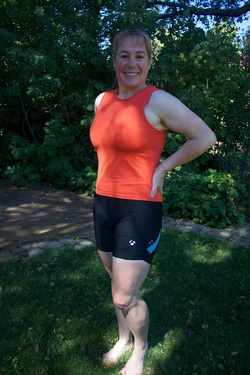
Eons have passed since our last informational entry which is an eternity in the blogosphere. As a high school teacher I am at last on summer vacation with some time on my hands to return to this place we have put together to encourage others to research and evaluate their lifestyles and make healthy, educated choices.
I have been told that it is madness to move during a school year as a teacher. Well, Tim and I purchased a home and moved at the end of February. Life is wonderful! Or at least it should be considering we now have a place to do as we want to with gardening and hosting international friends. Two weeks prior to our move Tim was hit by a car while riding his bike through a parking lot at a bike race. The driver simply did not look before backing up in the crowded lot. Needless to say, his RIGHT hand was dislocated and broken and surgery ensued a week before our move. Eight weeks later the 3 pins came out and at ten weeks his cast came off. He's been in rehab to get his hand fully functional again and we are still mopping up all the medical bills and his bicycle replacement, etc. So, thus, the reason we have not posted sooner. On the bright side, we love our home and things are returning to normal. We are back on the road again...
This month, I left the mid forties for the late forties, and I love it! My focus for this entry is about listening to your body by actively thinking about why you might feel the way you feel or why you are encountering symptoms you might be encountering. Now that Tim and I have been in nutritional ketosis for 11 months, here are some things that have transpired in my own learning about managing this state of life. In our last info blog Tim wrote about niacin. We both stopped taking it every day after we started getting phantom flushes. Phantom flushes are flushes that felt the same as a niacin flush but we had not taken any in hours. Tim used it again to detox off pain medication after surgery and it is a great supplement for various other detoxification needs. One of the biggest things that I have noticed is that my weight has become very stable. It is so stable that I now wonder if this is just where I'm going to be the rest of my life. In my life I've never had the luxury of weighing the same day after day, it has always shifted by pounds. This has completely stopped! I'm sitting at 143 ish and I am usually up or down within a pound.
I reached a point in March where I was not feeling really wonderful anymore and decided to try some changes. I started adding more carbohydrates back into my diet based on feelings. I know, no emotional eating. I'm talking about physical feelings. I was having a hard time with recovery after riding. I began to notice that it took about 3-4 days for me to recover instead of feeling great the next day after my 40+ mile rides. I learned to recognize when my glycogen stores were low and this lead me to eat raisins or a slice of toast immediately after a longer ride. Now I can do those longer rides and feel ready to ride again the next day, but it seems to take a slice of toast or dried fruit to get my glycogen stores back to full. If I had a performance study done I would know where to keep my heart rate in order not to tap those stores and only burn fat. Tim can thrive on half the amount of carbs that I seem to require. Listening to your body is absolutely essential! There is a blood test I am thinking about that helps you find your optimal carb level which can range from 25 grams to 100 grams per day. I am feeling great again at about 75-80 grams per day and my weight is the same, which I know from experience, if the additional carbs were a bad idea, I'd be going up with my weight.
Another reason for me to increase my carbs is that some of the things that I have done to manage other areas of my life needed to return. This last spring my allergies were very terrible, some of the worst I have experienced in my life. I decided to bring back the yogurt and local honey which control allergies for me and I've had no more problems. This means 9 grams of carbs from yogurt and 10 grams from the teaspoon of honey, but I feel great and I'm not taking allergy drugs, plus my weight is the same.
I need to update my "what I eat" page. After taking a nutrition class this last semester I learned that I need more variety, so I'm working on that over this summer. Of course my diet was "bad" for my class assignment which made it easy for me to complete the assignment created for self-evaluation of your own nutrition. I also learned a great deal on sanitation and keeping the kitchen sanitized, another area to up my game in. Stay posted, we are going to be working on catching up here.
In previous musings here, I wondered if having more fats in the body (not on the body) circulating through the skin was giving us sun protection because we noticed that we were suddenly getting sunburned less shortly after switching to high fats in our diets. You can see the initial results in our 3 month picture. To our surprise, there was an article published about this very thing! Here's the link to the article: http://www.foodrenegade.com/should-you-use-sunscreen/ . In my photo pictured here you will notice my funny tan lines. Well, tested out what my sun endurance is now by riding in the late morning to early afternoon for 2 to 2.5 hours without any sunscreen just to see how long it would take for me to burn. I had a slight burn at the 3 hour mark! Thus my funny tan lines. This is simply amazing because before changing our diets I would have the same pink in 20-30 minutes! My additional musing about Vitamin D is in the works for my next blood test. I have had tremendous trouble getting my Vitamin D levels in the normal range for several years. Vitamin D deficiency leads to osteoporosis which runs in my family and every case was preceded by chronic low Vitamin D. I live in a very sunny place and people all over my city, myself included, have low Vitamin D. Stay posted for those results along with my other blood numbers.
Hopefully by now you understand that a lifestyle of nutritional ketosis is very individualized and its essential that each person learns to listen to their own body. The photograph above was taken of me today, 11 months of this lifestyle, I'm sure you can see the difference for yourself between me at the beginning, at 3 months, to now. I weigh the same as I did at 3 months in but I'm so much smaller. I'm stronger and faster on my bike (remember you can follow us on Strava.com, it's free).
Here's wishing you a healthy and vibrant summer stay tuned in...
Lynette
I have been told that it is madness to move during a school year as a teacher. Well, Tim and I purchased a home and moved at the end of February. Life is wonderful! Or at least it should be considering we now have a place to do as we want to with gardening and hosting international friends. Two weeks prior to our move Tim was hit by a car while riding his bike through a parking lot at a bike race. The driver simply did not look before backing up in the crowded lot. Needless to say, his RIGHT hand was dislocated and broken and surgery ensued a week before our move. Eight weeks later the 3 pins came out and at ten weeks his cast came off. He's been in rehab to get his hand fully functional again and we are still mopping up all the medical bills and his bicycle replacement, etc. So, thus, the reason we have not posted sooner. On the bright side, we love our home and things are returning to normal. We are back on the road again...
This month, I left the mid forties for the late forties, and I love it! My focus for this entry is about listening to your body by actively thinking about why you might feel the way you feel or why you are encountering symptoms you might be encountering. Now that Tim and I have been in nutritional ketosis for 11 months, here are some things that have transpired in my own learning about managing this state of life. In our last info blog Tim wrote about niacin. We both stopped taking it every day after we started getting phantom flushes. Phantom flushes are flushes that felt the same as a niacin flush but we had not taken any in hours. Tim used it again to detox off pain medication after surgery and it is a great supplement for various other detoxification needs. One of the biggest things that I have noticed is that my weight has become very stable. It is so stable that I now wonder if this is just where I'm going to be the rest of my life. In my life I've never had the luxury of weighing the same day after day, it has always shifted by pounds. This has completely stopped! I'm sitting at 143 ish and I am usually up or down within a pound.
I reached a point in March where I was not feeling really wonderful anymore and decided to try some changes. I started adding more carbohydrates back into my diet based on feelings. I know, no emotional eating. I'm talking about physical feelings. I was having a hard time with recovery after riding. I began to notice that it took about 3-4 days for me to recover instead of feeling great the next day after my 40+ mile rides. I learned to recognize when my glycogen stores were low and this lead me to eat raisins or a slice of toast immediately after a longer ride. Now I can do those longer rides and feel ready to ride again the next day, but it seems to take a slice of toast or dried fruit to get my glycogen stores back to full. If I had a performance study done I would know where to keep my heart rate in order not to tap those stores and only burn fat. Tim can thrive on half the amount of carbs that I seem to require. Listening to your body is absolutely essential! There is a blood test I am thinking about that helps you find your optimal carb level which can range from 25 grams to 100 grams per day. I am feeling great again at about 75-80 grams per day and my weight is the same, which I know from experience, if the additional carbs were a bad idea, I'd be going up with my weight.
Another reason for me to increase my carbs is that some of the things that I have done to manage other areas of my life needed to return. This last spring my allergies were very terrible, some of the worst I have experienced in my life. I decided to bring back the yogurt and local honey which control allergies for me and I've had no more problems. This means 9 grams of carbs from yogurt and 10 grams from the teaspoon of honey, but I feel great and I'm not taking allergy drugs, plus my weight is the same.
I need to update my "what I eat" page. After taking a nutrition class this last semester I learned that I need more variety, so I'm working on that over this summer. Of course my diet was "bad" for my class assignment which made it easy for me to complete the assignment created for self-evaluation of your own nutrition. I also learned a great deal on sanitation and keeping the kitchen sanitized, another area to up my game in. Stay posted, we are going to be working on catching up here.
In previous musings here, I wondered if having more fats in the body (not on the body) circulating through the skin was giving us sun protection because we noticed that we were suddenly getting sunburned less shortly after switching to high fats in our diets. You can see the initial results in our 3 month picture. To our surprise, there was an article published about this very thing! Here's the link to the article: http://www.foodrenegade.com/should-you-use-sunscreen/ . In my photo pictured here you will notice my funny tan lines. Well, tested out what my sun endurance is now by riding in the late morning to early afternoon for 2 to 2.5 hours without any sunscreen just to see how long it would take for me to burn. I had a slight burn at the 3 hour mark! Thus my funny tan lines. This is simply amazing because before changing our diets I would have the same pink in 20-30 minutes! My additional musing about Vitamin D is in the works for my next blood test. I have had tremendous trouble getting my Vitamin D levels in the normal range for several years. Vitamin D deficiency leads to osteoporosis which runs in my family and every case was preceded by chronic low Vitamin D. I live in a very sunny place and people all over my city, myself included, have low Vitamin D. Stay posted for those results along with my other blood numbers.
Hopefully by now you understand that a lifestyle of nutritional ketosis is very individualized and its essential that each person learns to listen to their own body. The photograph above was taken of me today, 11 months of this lifestyle, I'm sure you can see the difference for yourself between me at the beginning, at 3 months, to now. I weigh the same as I did at 3 months in but I'm so much smaller. I'm stronger and faster on my bike (remember you can follow us on Strava.com, it's free).
Here's wishing you a healthy and vibrant summer stay tuned in...
Lynette
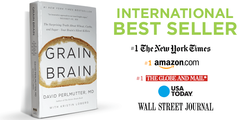
Renowned neurologist David Perlmutter, MD, blows the lid off a topic that’s been buried in medical literature for far too long: carbs are destroying your brain. And not just unhealthy carbs, but even healthy ones like whole grains can cause dementia, ADHD, anxiety, chronic headaches, depression, and much more. Dr. Perlmutter explains what happens when the brain encounters common ingredients in your daily bread and fruit bowls, why your brain thrives on fat and cholesterol, and how you can spur the growth of new brain cells at any age. He offers an in-depth look at how we can take control of our “smart genes” through specific dietary choices and lifestyle habits, demonstrating how to remedy our most feared maladies without drugs. In Grain Brain, Dr. Perlmutter offers suggestions on how to fuel the brain properly with sound nutrition. These basic changes can help alleviate, or even reverse brain disease, eliminate brain fog symptoms, and improve memory and energy levels.
Check out this short video for more info.
It is so refreshing to read a book by a brilliant man who has done the research that aligns with our lifestyle. He is really onto something significant. He has clinical research to support his claims that carbs are killing us as a society. It's a NT Times best seller, #1 right now.
Dr. Perlmutter is very vocal about the destructive effects of grains and carbs on our brain. The frequency of mental disorders like, depression, ADHD, alzheimer's and other cognitive issues.
Check out this short video for more info.
It is so refreshing to read a book by a brilliant man who has done the research that aligns with our lifestyle. He is really onto something significant. He has clinical research to support his claims that carbs are killing us as a society. It's a NT Times best seller, #1 right now.
Dr. Perlmutter is very vocal about the destructive effects of grains and carbs on our brain. The frequency of mental disorders like, depression, ADHD, alzheimer's and other cognitive issues.
also
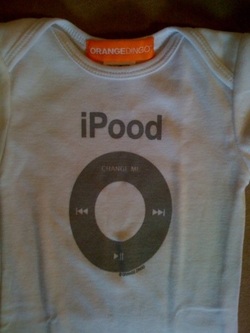
It seems the topic of calories comes up all the time. Everyone thinks that counting calories will cause weight loss. If you burn more than you take in, you'll lose weight. 3,500 Kcal = 1lb of fat, right? After all, you cannot argue with the first law of thermodynamics, right? Which basically states that you cannot destroy energy, conservation of energy is the law. Yes that is true, but maybe we need to have a quick physics lesson. The law states, "The law of conservation of energy states that the total energy of an isolated system is constant" So, is your body an isolated system? (See picture to the left) No, it is not. Also, is your body 100% efficient in turning your food energy into fuel? No, it is not. If your body does not use the fuel it goes out in the form of waste or is stored as fat. So the question is, what kind of calories are you consuming?
Here is an extreme example: Take 1 cup of olive oil and drink it. You'll be getting about 1920 Kcal worth of energy in the 224 grams of fats, 0g carbs. What will happen? Provided you don't vomit, most people know what will happen. You'll get diarrhea, why is that? Your body cannot use all of those calories with perfect efficiency so it dumps any excess. So our body is not an isolated system. Fat uptake is regulated by the pressure gradients and absorbed by the lymphatic system. So if your lipid levels are full, your intestines will let it pass. See Fig.1
Now, let's talk about carbs. These behave much differently because it uses a different metabolic system to harness the energy. If you were to drink 8 20oz bottles of cherry Coke, you'd have 2080 Kcal's via 560g of sugars. Provided you don't vomit or go into shock, what happens to these calories? Your body only needs 5g of sugar in your bloodstream at one time, anything above that destroys tissue. So your pancreas comes to the rescue and pushes the extra 555g of sugar into your fat stores with a rush of insulin. See fig. 2
Here is an extreme example: Take 1 cup of olive oil and drink it. You'll be getting about 1920 Kcal worth of energy in the 224 grams of fats, 0g carbs. What will happen? Provided you don't vomit, most people know what will happen. You'll get diarrhea, why is that? Your body cannot use all of those calories with perfect efficiency so it dumps any excess. So our body is not an isolated system. Fat uptake is regulated by the pressure gradients and absorbed by the lymphatic system. So if your lipid levels are full, your intestines will let it pass. See Fig.1
Now, let's talk about carbs. These behave much differently because it uses a different metabolic system to harness the energy. If you were to drink 8 20oz bottles of cherry Coke, you'd have 2080 Kcal's via 560g of sugars. Provided you don't vomit or go into shock, what happens to these calories? Your body only needs 5g of sugar in your bloodstream at one time, anything above that destroys tissue. So your pancreas comes to the rescue and pushes the extra 555g of sugar into your fat stores with a rush of insulin. See fig. 2
So if your body gets a large dose of calories, it really depends on what kind they are. Generally speaking, carbs are digested quickly and turned to fuel then deposited into the bloodstream, depending on work being performed are converted into ATP with CO2 as a byproduct. The remaining glucose is transported into adipose tissue (body fat).
Fats are processed differently all together and enter the bloodstream as triglycerides where they are available for muscles to use for fuel as ATP. Any remaining fats that are not needed will not be stored, but eliminated via waste.
Fats are processed differently all together and enter the bloodstream as triglycerides where they are available for muscles to use for fuel as ATP. Any remaining fats that are not needed will not be stored, but eliminated via waste.
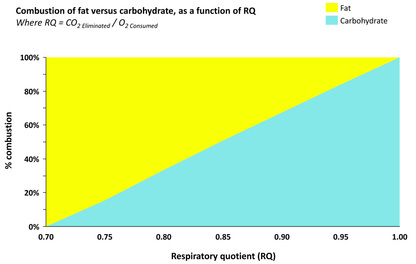 Fig. 3
Fig. 3 Calories Out
All exercise is not created equal. Sprinters use the creatine cycle, they don't tap fats or glycogen stored in the muscles and liver. Middle distance runners who are 2 through 120 minute efforts like 800m to 15,000m are tapping into glycogen stores almost exclusively.
Fig. 3 shows how your body uses the two main fuel systems as you work harder in your workouts. It's pretty fun to see this in action, when you're burning carbs, you produce more CO2, thus you have to breathe harder to eliminate the CO2 from your body. But when you're oxidizing fat, you produce quite a bit less CO2 and can improve your performance with less panting. You also don't feel the burn as quickly into a long steep climb as you would if you're burning carbs for fuel. There is a great article by Dr. Peter Attia on his journey to ketosis as measured in his performance. He proves pretty clearly that ketosis is a much better system for the endurance athlete.
I do not count calories to manage my weight, it seems to make no difference at all. Dr. Steve Phinney has been living in nutritional ketosis for 30 years, his weight has been stable during that time however, his calories can fluctuate from 2,000-6,000 per day.
Here is an example from MyFitnessPal app. It's great except for the assumption that my body is 100% efficient. Also, my lean body mass happens to be 137 lbs. So there might be a little something wrong with their calculation.
All exercise is not created equal. Sprinters use the creatine cycle, they don't tap fats or glycogen stored in the muscles and liver. Middle distance runners who are 2 through 120 minute efforts like 800m to 15,000m are tapping into glycogen stores almost exclusively.
Fig. 3 shows how your body uses the two main fuel systems as you work harder in your workouts. It's pretty fun to see this in action, when you're burning carbs, you produce more CO2, thus you have to breathe harder to eliminate the CO2 from your body. But when you're oxidizing fat, you produce quite a bit less CO2 and can improve your performance with less panting. You also don't feel the burn as quickly into a long steep climb as you would if you're burning carbs for fuel. There is a great article by Dr. Peter Attia on his journey to ketosis as measured in his performance. He proves pretty clearly that ketosis is a much better system for the endurance athlete.
I do not count calories to manage my weight, it seems to make no difference at all. Dr. Steve Phinney has been living in nutritional ketosis for 30 years, his weight has been stable during that time however, his calories can fluctuate from 2,000-6,000 per day.
Here is an example from MyFitnessPal app. It's great except for the assumption that my body is 100% efficient. Also, my lean body mass happens to be 137 lbs. So there might be a little something wrong with their calculation.
Here are a few links to articles & studies about how the ci/co theory does not work.
Dieting does not work UCLA
Reality trumps myth
Nova article
Dieting does not work UCLA
Reality trumps myth
Nova article
As I have been researching ways to improve my lipid profile, I started reading a bunch of research on Niacin (vitamin B-3). It comes in a few forms, some good, some not so much. The benefits are flat-out amazing! Niacin, also known as nicotinic acid and vitamin B3, is a water soluble, essential B vitamin which when given in high doses is effective in lowering low-density lipoprotein (LDL) cholesterol and raising high density lipoprotein (HDL) cholesterol. Which is better than statin drugs that lower all cholesterol, including the good stuff. There are 3 main forms of niacin, nicotinic acid, niacinamide and inositol hexanicotinate. The later is the extended release or sustained release that is not very safe. Niacinamide is the most common form because it does not trigger the flushing response, but is less effective for certain conditions. The best part is that niacin is cheap and pharmaceutical companies cannot patent it.
I want to do a fair and balanced report here, so I will do my best to show both sides, but frankly, I like niacin, in fact, I'm doing a niacin flush right now, my skin is starting to get red and warmer as I type.
So let's start with a recent study that headlines, "Niacin Therapy Shows No Benefits, Has Some Harmful Effects" it opens with this, "Mar. 11, 2013 — A highly anticipated study evaluating a combination of the vitamin niacin with the anti-flushing agent laropiprant finds the therapy provides no benefit to and may even be harmful for patients with vascular disease, according to research presented today at the American College of Cardiology's 62nd Annual Scientific Session. Detailed trial data is presented here for the first time."
Now, here comes the study, (I hope this serves as a lesson on how to read studies, because this one has some serious inconsistencies.) They did a good job at selection and randomization with placebo. See if you can spot the issues in isolating niacin's impact. Click the link to see an article that highlights the study details.
"The four-year study tested a combination of extended-release (ER) niacin with laropiprant in patients at risk for cardiovascular problems such as heart disease and stroke. The 25,673 patients in the study were randomized to receive ER niacin/laropiprant 2g/40mg or a placebo, and all received commonly prescribed LDL cholesterol-lowering medication simvastatin (with or without ezetimibe)."
OK, I hope you got this quiz right. They were all on statin drugs, they chose the extended release and had laropiprant to reduce the flushing effect that normally occurs with niacin. Let's take a look at their findings that they published for the world to see.
"The study did not meet the primary endpoint of reducing the chances of a major vascular event, defined as the composite of non-fatal heart attack or heart-related death, stroke, or need for angioplasty or bypass surgery. Patients receiving ER niacin/laropiprant had a similar number of major vascular events as patients receiving placebo (13.2 vs. 13.7 percent, p=0.29).
The study also found unexpected and significant excesses of bleeding (2.5 vs. 1.9 percent) and infections (8.0 vs. 6.6 percent) among the ER niacin/laropiprant patients. In addition, significantly higher numbers of patients receiving the study drug suffered serious known side effects including new onset diabetes (9.1 vs. 7.3 percent), diabetic complications (11.1 vs. 7.5 percent), gastrointestinal problems such as indigestion and diarrhea (4.8 vs. 3.8 percent), and skin issues including itching and rashes (0.7 vs. 0.4 percent)."
First, using extended release niacin has been proven to produce unacceptable side effects, primarily liver damage. "Significant hepatotoxicity is particularly common with high doses of sustained release niacin. In many cases, the injury becomes apparent after a dose increase or after switching from the regular crystalline to a sustained-release form."
Second, laropiprant has been recalled, "Merck & Co has said it is recalling Tredaptive cholesterol tablets in response to trial results that raised safety concerns and the recommendations of a European Medicines Agency safety panel." The US regulators rejected laropiprant for market release in 2008. So, why would you continue a study with a product that was rejected by the FDA?
Third, why were the subjects all on statin drugs? It seems that there are too many chemical interactions to have a reliable study. In order to study a single compound, you need to reduce the variables. Could the statin drugs inhibit the effects of niacin? We may never know.
In conclusion why have them on the least effective, most dangerous forms of niacin available? Why use laropiprant to prevent the niacin flush? Why select people who are on statins? So you can have the headlines that say niacin is harmful -- maybe?
Moving on to the benefits. One of the noted benefits is the anti-inflammatory effect on arthritis. In an excellent article, "Several researchers have reported excellent results in arthritic patients using niacinamide. While niacin opens up the blood vessels near the surface and causes a flushing sensation, niacinamide only opens up the deep blood vessels like those surrounding the joints.
In cases of moderate arthritis, outstanding results have been produced by taking 1,000 to 1,500 mg a day. In more severe cases, as much as 3,000 mg to 4,000 mg have been recommended."
For dealing with cholesterol, it raises the production of HDL and reduces triglycerides and LDL. The article continues, "One of the most effective and least expensive ways to lower blood lipids (cholesterol and triglycerides) is to take 1,000 to 3,000 mg of niacin a day.
Patients using 1,000 mg the first day, 2,000 mg the second day, and 3,000 mg each day thereafter have seen as much as a 25 percent reduction in cholesterol levels, and a 50 percent reduction in triglycerides. (Blood lipid reduction is the case where niacinamide is not as effective as niacin.)"
Another reference manual from Berkley Heart Labs concluded their study of Lp(a) (the lipoprotein(a) is one of the most dangerous blood markers for CHD) "Treatments for elevated Lp(a) levels have variably reported analyte-lowering benefits. Lifestyle modifications such as diet, weight loss, and exercise generally have little or no effect on Lp(a) levels. Compared to the well reported LDL-lowering effects of statins and bile acid sequestrants (resins), these drugs generally also have little, or no effect on Lp(a) levels. Based on the best available study data, Niacin is the most effective drug option to treat Lp(a) elevations."
This study in 2002 was conclusive though some, 21%, did not like the regimen due to the flushing response. Though it lowered their Lp(a) and improved their other lipid profiles, they did not stay with the treatment.
It's been known to help with:
Reversing heart disease
Senility, memory loss, depression, insomnia
Sun sensitivity
Motion sickness
Tinnitus, vertigo or hearing problems
Improved circulation in legs of diabetics
Migraine headaches
It's not a perfect vitamin. You need to be aware that there are side effects like irritated stomach lining or ulcers and gout flare-ups. Be sure to take niacin on a full stomach, right after a meal is best. Several sources recommend consulting your doctor prior to taking niacin, especially in high doses.
We've been taking straight niacin, 500mg as pictured above. My first dose which was about 1 hour after a meal, caused quite the rush of blood to the surface of my skin, it felt like a sunburn all over my face, neck and abdomen. It lasted about an hour and then subsided. Then the next morning dose I felt a small warming sensation, the evening dose had very little effect on me. Your body does adapt to the niacin once your levels come up. It takes about 2 days to reduce the effects, but they are not painful, some enjoy the warming feeling.
I want to do a fair and balanced report here, so I will do my best to show both sides, but frankly, I like niacin, in fact, I'm doing a niacin flush right now, my skin is starting to get red and warmer as I type.
So let's start with a recent study that headlines, "Niacin Therapy Shows No Benefits, Has Some Harmful Effects" it opens with this, "Mar. 11, 2013 — A highly anticipated study evaluating a combination of the vitamin niacin with the anti-flushing agent laropiprant finds the therapy provides no benefit to and may even be harmful for patients with vascular disease, according to research presented today at the American College of Cardiology's 62nd Annual Scientific Session. Detailed trial data is presented here for the first time."
Now, here comes the study, (I hope this serves as a lesson on how to read studies, because this one has some serious inconsistencies.) They did a good job at selection and randomization with placebo. See if you can spot the issues in isolating niacin's impact. Click the link to see an article that highlights the study details.
"The four-year study tested a combination of extended-release (ER) niacin with laropiprant in patients at risk for cardiovascular problems such as heart disease and stroke. The 25,673 patients in the study were randomized to receive ER niacin/laropiprant 2g/40mg or a placebo, and all received commonly prescribed LDL cholesterol-lowering medication simvastatin (with or without ezetimibe)."
OK, I hope you got this quiz right. They were all on statin drugs, they chose the extended release and had laropiprant to reduce the flushing effect that normally occurs with niacin. Let's take a look at their findings that they published for the world to see.
"The study did not meet the primary endpoint of reducing the chances of a major vascular event, defined as the composite of non-fatal heart attack or heart-related death, stroke, or need for angioplasty or bypass surgery. Patients receiving ER niacin/laropiprant had a similar number of major vascular events as patients receiving placebo (13.2 vs. 13.7 percent, p=0.29).
The study also found unexpected and significant excesses of bleeding (2.5 vs. 1.9 percent) and infections (8.0 vs. 6.6 percent) among the ER niacin/laropiprant patients. In addition, significantly higher numbers of patients receiving the study drug suffered serious known side effects including new onset diabetes (9.1 vs. 7.3 percent), diabetic complications (11.1 vs. 7.5 percent), gastrointestinal problems such as indigestion and diarrhea (4.8 vs. 3.8 percent), and skin issues including itching and rashes (0.7 vs. 0.4 percent)."
First, using extended release niacin has been proven to produce unacceptable side effects, primarily liver damage. "Significant hepatotoxicity is particularly common with high doses of sustained release niacin. In many cases, the injury becomes apparent after a dose increase or after switching from the regular crystalline to a sustained-release form."
Second, laropiprant has been recalled, "Merck & Co has said it is recalling Tredaptive cholesterol tablets in response to trial results that raised safety concerns and the recommendations of a European Medicines Agency safety panel." The US regulators rejected laropiprant for market release in 2008. So, why would you continue a study with a product that was rejected by the FDA?
Third, why were the subjects all on statin drugs? It seems that there are too many chemical interactions to have a reliable study. In order to study a single compound, you need to reduce the variables. Could the statin drugs inhibit the effects of niacin? We may never know.
In conclusion why have them on the least effective, most dangerous forms of niacin available? Why use laropiprant to prevent the niacin flush? Why select people who are on statins? So you can have the headlines that say niacin is harmful -- maybe?
Moving on to the benefits. One of the noted benefits is the anti-inflammatory effect on arthritis. In an excellent article, "Several researchers have reported excellent results in arthritic patients using niacinamide. While niacin opens up the blood vessels near the surface and causes a flushing sensation, niacinamide only opens up the deep blood vessels like those surrounding the joints.
In cases of moderate arthritis, outstanding results have been produced by taking 1,000 to 1,500 mg a day. In more severe cases, as much as 3,000 mg to 4,000 mg have been recommended."
For dealing with cholesterol, it raises the production of HDL and reduces triglycerides and LDL. The article continues, "One of the most effective and least expensive ways to lower blood lipids (cholesterol and triglycerides) is to take 1,000 to 3,000 mg of niacin a day.
Patients using 1,000 mg the first day, 2,000 mg the second day, and 3,000 mg each day thereafter have seen as much as a 25 percent reduction in cholesterol levels, and a 50 percent reduction in triglycerides. (Blood lipid reduction is the case where niacinamide is not as effective as niacin.)"
Another reference manual from Berkley Heart Labs concluded their study of Lp(a) (the lipoprotein(a) is one of the most dangerous blood markers for CHD) "Treatments for elevated Lp(a) levels have variably reported analyte-lowering benefits. Lifestyle modifications such as diet, weight loss, and exercise generally have little or no effect on Lp(a) levels. Compared to the well reported LDL-lowering effects of statins and bile acid sequestrants (resins), these drugs generally also have little, or no effect on Lp(a) levels. Based on the best available study data, Niacin is the most effective drug option to treat Lp(a) elevations."
This study in 2002 was conclusive though some, 21%, did not like the regimen due to the flushing response. Though it lowered their Lp(a) and improved their other lipid profiles, they did not stay with the treatment.
It's been known to help with:
Reversing heart disease
Senility, memory loss, depression, insomnia
Sun sensitivity
Motion sickness
Tinnitus, vertigo or hearing problems
Improved circulation in legs of diabetics
Migraine headaches
It's not a perfect vitamin. You need to be aware that there are side effects like irritated stomach lining or ulcers and gout flare-ups. Be sure to take niacin on a full stomach, right after a meal is best. Several sources recommend consulting your doctor prior to taking niacin, especially in high doses.
We've been taking straight niacin, 500mg as pictured above. My first dose which was about 1 hour after a meal, caused quite the rush of blood to the surface of my skin, it felt like a sunburn all over my face, neck and abdomen. It lasted about an hour and then subsided. Then the next morning dose I felt a small warming sensation, the evening dose had very little effect on me. Your body does adapt to the niacin once your levels come up. It takes about 2 days to reduce the effects, but they are not painful, some enjoy the warming feeling.
This is my second blood test after starting the low-carb/high-fat (LCHF) lifestyle over 2 years ago. In the past 3+ months, we've gone into ketosis. These numbers are pretty good, but I'll explain why in a minute.
The first test (pictured below) is the Atherotech VAP, which is an actual particle count, vs. the estimated LDL formula on a typical lipid panel. In case you did not know, the LDL is estimated using a formula created in 1974, so we're generally depending on a formula to estimate the "bad" cholesterol instead of measuring it directly. I chose this test in addition to my normal tests after reading the books, "Don't Die Early" and "The Great Cholesterol Myth." This shows size and type of particles measured directly. It is much more useful information to know the size and density of the cholesterol in your bloodstream. It also measures the other critical components like triglycerides and Lp(a).
For those with the gift of seeing the obvious, I have four results that show HIGH, so it must be alarming & bad, right?
First, lets look at the good & great stuff. My HDL (good) is 94 which is 19 points higher than last time. Any number higher than 45 in men is good; I'm more than double. My triglycerides are 48, which is very low, considering 150 is the level which causes concern; I'm less than 1/3 threshold. That low number is most likely due to my no-sugar, no-wheat, no-corn diet. But wait, I thought eating all that saturated fat makes a whole bunch of fat show up in your blood, right? Not if you're a fat-burning machine -- it gets consumed. Fat is dangerous when it is combined with wheat and sugars. (can you say doughnut?) because you're burning glucose, the fat is still floating around in your blood, then the sugar and wheat inflames your arteries creating lesions where the small dense LDL particles can lodge and start to build up into plaque.
So the total cholesterol of 233 is high, right? Well, people with cholesterol of 250 have heart attacks and so do people with 150. There is no direct correlation between high cholesterol and heart disease, in fact there is no correlation between high LDL and heart disease. A recent study of almost 140,000 patients admitted to the hospital for heart disease, almost half of them had LDL levels under 100 mg/dL. So the Lipoprotein(a) is the more serious one because that is the one that is sticky and collects on the arterial walls and promotes cardiac plaque. The issue is the definition of HIGH. Upon reading these results, I was a little scared that I was at 17 and the baseline is at 10. According to two sources, 30 mg/dL is considered elevated and one source said 20 mg/dL is to top of the normal range. Source 1 Track Your Plaque site and Source 2 NIH.gov. A quote from the prolipid.com site states this, "You may notice Lipoprotein(a) or Lp(a) on your medical chart. Lp(a) is a subtype of LDL, and individuals with high levels of Lp(a) or "very bad" LDL, appear to be at higher risk for heart disease. Researchers can't seem to agree on the exact level of "high" Lp(a), but most specialists consider a value of approximately 30 mg/dL (0.8 mmol/l) to be high."
The VLDL at 13, and VLDL-3 being low is encouraging. These are the small, sticky guys who cause problems with your arteries.
The good news is, a simple solution for lowering my LDL is available. It's Niacin, or vitamin B3. 500mg per day, some sources up to 3g, are recommended to lower Lp(a) up to 20-30%. I may choose to increase my niacin and see what that does to my numbers next year.
More to come, next week I'll be getting my physical with more numbers...stay tuned.
The first test (pictured below) is the Atherotech VAP, which is an actual particle count, vs. the estimated LDL formula on a typical lipid panel. In case you did not know, the LDL is estimated using a formula created in 1974, so we're generally depending on a formula to estimate the "bad" cholesterol instead of measuring it directly. I chose this test in addition to my normal tests after reading the books, "Don't Die Early" and "The Great Cholesterol Myth." This shows size and type of particles measured directly. It is much more useful information to know the size and density of the cholesterol in your bloodstream. It also measures the other critical components like triglycerides and Lp(a).
For those with the gift of seeing the obvious, I have four results that show HIGH, so it must be alarming & bad, right?
First, lets look at the good & great stuff. My HDL (good) is 94 which is 19 points higher than last time. Any number higher than 45 in men is good; I'm more than double. My triglycerides are 48, which is very low, considering 150 is the level which causes concern; I'm less than 1/3 threshold. That low number is most likely due to my no-sugar, no-wheat, no-corn diet. But wait, I thought eating all that saturated fat makes a whole bunch of fat show up in your blood, right? Not if you're a fat-burning machine -- it gets consumed. Fat is dangerous when it is combined with wheat and sugars. (can you say doughnut?) because you're burning glucose, the fat is still floating around in your blood, then the sugar and wheat inflames your arteries creating lesions where the small dense LDL particles can lodge and start to build up into plaque.
So the total cholesterol of 233 is high, right? Well, people with cholesterol of 250 have heart attacks and so do people with 150. There is no direct correlation between high cholesterol and heart disease, in fact there is no correlation between high LDL and heart disease. A recent study of almost 140,000 patients admitted to the hospital for heart disease, almost half of them had LDL levels under 100 mg/dL. So the Lipoprotein(a) is the more serious one because that is the one that is sticky and collects on the arterial walls and promotes cardiac plaque. The issue is the definition of HIGH. Upon reading these results, I was a little scared that I was at 17 and the baseline is at 10. According to two sources, 30 mg/dL is considered elevated and one source said 20 mg/dL is to top of the normal range. Source 1 Track Your Plaque site and Source 2 NIH.gov. A quote from the prolipid.com site states this, "You may notice Lipoprotein(a) or Lp(a) on your medical chart. Lp(a) is a subtype of LDL, and individuals with high levels of Lp(a) or "very bad" LDL, appear to be at higher risk for heart disease. Researchers can't seem to agree on the exact level of "high" Lp(a), but most specialists consider a value of approximately 30 mg/dL (0.8 mmol/l) to be high."
The VLDL at 13, and VLDL-3 being low is encouraging. These are the small, sticky guys who cause problems with your arteries.
The good news is, a simple solution for lowering my LDL is available. It's Niacin, or vitamin B3. 500mg per day, some sources up to 3g, are recommended to lower Lp(a) up to 20-30%. I may choose to increase my niacin and see what that does to my numbers next year.
More to come, next week I'll be getting my physical with more numbers...stay tuned.
This scenario seems to be a regular occurrence, I meet so many people who do not want to engage in learning about their bodies. It is amazing how people decide to be 'low-information' about their body while memorizing stats on cars, baseball players, movie stars or technology and yet choose not use that same capability to learn about what makes them sick or healthy.
I have pondered for quite a while about writing this commentary because I could not find a way to be positive or non-judgmental about the topic. I am completely fascinated about how seemingly simple things work in our bodies. It is natural to assume that others would think the same way as I do. Well, that is not true. I cannot get myself interested in golf no matter what I do, nor who attempts to influence me, I just don't enjoy it. Perhaps it is that the rules say you cannot tackle or steal, and where is the goalie anyway? Now it could be that I'm maxed-out on expensive hobbies by my wife. Woodworking, sailing, fly fishing, hunting, and cycling are all pretty expensive sports to say the least and golf would not help my marriage. My point is, I understand that some people prefer not to know about certain topics.
Our bodies are not hobbies, they are the magnificent machine that will enable us to do great things, change history, influence generations or perhaps save lives. I expect to have a huge affect on the world because I believe there is much to be done and I want to live a very long, productive life. Humanity is valuable and I see myself making great contributions in the years to come.
I have pondered for quite a while about writing this commentary because I could not find a way to be positive or non-judgmental about the topic. I am completely fascinated about how seemingly simple things work in our bodies. It is natural to assume that others would think the same way as I do. Well, that is not true. I cannot get myself interested in golf no matter what I do, nor who attempts to influence me, I just don't enjoy it. Perhaps it is that the rules say you cannot tackle or steal, and where is the goalie anyway? Now it could be that I'm maxed-out on expensive hobbies by my wife. Woodworking, sailing, fly fishing, hunting, and cycling are all pretty expensive sports to say the least and golf would not help my marriage. My point is, I understand that some people prefer not to know about certain topics.
Our bodies are not hobbies, they are the magnificent machine that will enable us to do great things, change history, influence generations or perhaps save lives. I expect to have a huge affect on the world because I believe there is much to be done and I want to live a very long, productive life. Humanity is valuable and I see myself making great contributions in the years to come.
No matter the opinion, I cannot sit by and let the propaganda pumped out by the media guide my eating decisions. I cannot be a low-information citizen! I have to research the articles and news stories by reaching back to the source, then deciding the course of action. I am the one who has to live in my body and I want it to be an enjoyable experience.
Lynette and I decided not to outsource our health-care to the "really smart" people. Instead, we would rather take the personal responsibility to steward our temples and hire smart people to help us. Yes, there is a slight difference. I still go to doctors when needed, (2 times in 9 years), and when we want to have a good check-up. We just take personal responsibility for our health first.
If I follow the USDA guidelines, being the Plate or Food Pyramid, I may end up where the majority of our society is -- obese and looking more like a pyramid. If you think about it, everything that was pulled from the market was first approved by the FDA as safe. Fen-phen for weight loss, for example, was deemed safe, we now know too well now that it is not. I am opting out of the typical health care system because if I follow their guidelines, I could end up on high blood pressure medicine, statin drugs, injected with flu shots and downing sleep aids like Ambien. Then comes diabetes, so I can depend on insulin and the additional medications needed to deal with the side effects, and on it will go. In time, interventions like stints, pacemakers, angioplasties and bypasses will become part of my health care. In the end, I am dead and broke, my life cut short 20-30+ years. If you think I'm being extreme, read this. However, if I choose to live on purpose by evaluating information from a scientific basis, and take the time to learn the signals of my body, allowing it teach me how to care for it, I will live a longer and fuller life.
To me, sickness is what happens when people do not make the effort to educate themselves about their bodily systems, the beautiful balance and interdependence we live in moment to moment. It is truly a work of art. The ATP cycle is amazing beyond belief, it makes your next heartbeat, your next breath, facilitates digestive system processes and so much more. This power currency has a complete recycling system too. I found this to be startling. "The energy used by human cells requires the hydrolysis of 100 to 150 moles of ATP daily, which is around 50 to 75 kg. We have only 250g of ATP at any one time. A human will typically use up his or her body weight of ATP over the course of the day.[33] This means that each ATP molecule is recycled 500 to 750 times during a single day. ATP cannot be stored, hence its consumption closely follows its synthesis." If you don't have ATP for 1 second, you are dead. When you learn how to maximize that one system, you begin to tap into the potential of the human body.
Please watch this video, just to expand your mind.
Lynette and I decided not to outsource our health-care to the "really smart" people. Instead, we would rather take the personal responsibility to steward our temples and hire smart people to help us. Yes, there is a slight difference. I still go to doctors when needed, (2 times in 9 years), and when we want to have a good check-up. We just take personal responsibility for our health first.
If I follow the USDA guidelines, being the Plate or Food Pyramid, I may end up where the majority of our society is -- obese and looking more like a pyramid. If you think about it, everything that was pulled from the market was first approved by the FDA as safe. Fen-phen for weight loss, for example, was deemed safe, we now know too well now that it is not. I am opting out of the typical health care system because if I follow their guidelines, I could end up on high blood pressure medicine, statin drugs, injected with flu shots and downing sleep aids like Ambien. Then comes diabetes, so I can depend on insulin and the additional medications needed to deal with the side effects, and on it will go. In time, interventions like stints, pacemakers, angioplasties and bypasses will become part of my health care. In the end, I am dead and broke, my life cut short 20-30+ years. If you think I'm being extreme, read this. However, if I choose to live on purpose by evaluating information from a scientific basis, and take the time to learn the signals of my body, allowing it teach me how to care for it, I will live a longer and fuller life.
To me, sickness is what happens when people do not make the effort to educate themselves about their bodily systems, the beautiful balance and interdependence we live in moment to moment. It is truly a work of art. The ATP cycle is amazing beyond belief, it makes your next heartbeat, your next breath, facilitates digestive system processes and so much more. This power currency has a complete recycling system too. I found this to be startling. "The energy used by human cells requires the hydrolysis of 100 to 150 moles of ATP daily, which is around 50 to 75 kg. We have only 250g of ATP at any one time. A human will typically use up his or her body weight of ATP over the course of the day.[33] This means that each ATP molecule is recycled 500 to 750 times during a single day. ATP cannot be stored, hence its consumption closely follows its synthesis." If you don't have ATP for 1 second, you are dead. When you learn how to maximize that one system, you begin to tap into the potential of the human body.
Please watch this video, just to expand your mind.
You are amazing! You are engineered with an adaptable immune system, fuel manufacturing system; producing the needed fuels to run every unique cell in your body. It is mind-blowing how versatile and forgiving our bodies are. We can give it bad foods and it will graciously accommodate our bad choices and provide energy for us to live.
Take time to learn the major systems of your body. Learn what the most efficient fuels producing the least amount of waste. Learn what feeds you and what feeds sickness and cancer. Learn to Live!
Take time to learn the major systems of your body. Learn what the most efficient fuels producing the least amount of waste. Learn what feeds you and what feeds sickness and cancer. Learn to Live!
Finally some news that is worth reading. The LA Times just ran a story on Oct 22nd 2013 "Time to end the war against saturated fat?" It was refreshing to know that I was not the only one talking about the benefits of a low-carb/high-fat diet. "British Medical Journal has issued a clarion call to all who want to ward off heart disease: Forget the statins and bring back the bacon (or at least the full-fat yogurt). Saturated fat is not the widow-maker it's been made out to be, writes British cardiologist Aseem Malhotra" The story's lead paragraph read. Ahhh, bacon! Though the LA Times is for readers who don't generally want too much science, it was rooted in a solid peer reviewed BMJ article with some provoking questions entitled "Saturated fat is not the major issue" by Dr. Aseem Malhotra, interventional cardiology specialist registrar, Croydon University Hospital, London, brought up the fact that shortly after the US stated that saturated fat was deadly, studies were already disproving the heralded "seven countries" study. Which concluded "that a correlation existed between the incidence of coronary heart disease and total cholesterol concentrations, which then correlated with the proportion of energy provided by saturated fat. But correlation is not causation. Nevertheless, we were advised to cut fat intake to 30% of total energy and saturated fat to 10%.” (1) "The aspect of dietary saturated fat that is believed to have the greatest influence on cardiovascular risk is elevated concentrations of low density lipoprotein (LDL) cholesterol. Yet the reduction in LDL cholesterol from reducing saturated fat intake seems to be specific to large, buoyant (type A) LDL particles, when in fact it is the small, dense (type B) particles (responsive to carbohydrate intake) that are implicated in cardiovascular disease" (2) To summarize, carbs create small dense LDL particles which are bad news, but saturated fats are large and very large LDL particles which are harmless.
What about cholesterol?
The first response I get when I tell people that a high-fat diet is great for weight loss and energy, they say something about cholesterol. "I have high cholesterol, I can't do a high-fat diet" or something along that line. Well, good news! (not really new news) but the correlation of cholesterol and heart disease has not been proven. "Despite the common belief that high cholesterol is a significant risk factor for coronary artery disease, several independent population studies in healthy adults have shown that low total cholesterol is associated with cardiovascular and non-cardiac mortality, indicating that high total cholesterol is not a risk factor in a healthy population." (3), (4), (5)
Notice the dates, 1994, 2002, some of these studies have been out there for a long time, peer reviewed and published, how come they have not hit the mainstream medical community? Is it that "the science is settled" argument and we move on with our blinders on? I hope not!
Aseem Malhotra states "A recent “real world” study of 150 000 patients who were taking statins showed “unacceptable” side effects—including myalgia, gastrointestinal upset, sleep and memory disturbance, and erectile dysfunction—in 20% of participants, resulting in discontinuation of the drug.(6) This is massively at odds with the major statin trials that report significant side effects of myopathy or muscle pain in only one in 10 000."
Statin drugs are a huge business. Pfizer’s Lipitor was the world’s top-selling medicine in 2010, according to IMS, raking in sales of $13.3billion. AstraZeneca’s Crestor, which garnered $5.38billion in sales during 2009, is one of the company’s best selling medicines.
Total sales last year of cholesterol-treating medicines - including statins - were $35billion, according to IMS. So if you follow the money, it's a tough decision to state publicly that it's not really necessary to take statin drugs to lower cholesterol when you can reduce your carb intake and get the same results.
From a UK Telegraph article "Despite the commercial success of statins, Dr Mali, (a pharmaceuticals analyst at Matrix Partners), out that the persistence of heart disease does raise questions about the drugs’ value for money.
“Statins have been the fairy tale story in the industry. But heart disease is still the number one killer in the western world, so one could argue how much value for money have we really got out of their use,” he said."
Aseem Malhotra stated a stinging truth "Adopting a Mediterranean diet after a heart attack is almost three times as powerful in reducing mortality as taking a statin. The recently published PREDIMED randomised controlled trial was stopped early after it showed that in high risk people the Mediterranean diet achieved a 30% improvement over a “low fat” diet in terms of cardiovascular events.(7) Dr, Malhotra states finally "It is time to bust the myth of the role of saturated fat in heart disease and wind back the harms of dietary advice that has contributed to obesity." So if I were reading this correctly, saturated fat, in his professional opinion, is not the culprit, but the dietary advice that has been given since Ancel Keys somehow won over the hearts and minds of the world in the 1970's; that is the problem. A low fat diet makes you fat & sick, while a low carb/high fat diet makes you skinny. Pass the bacon! (Organic of course)
What about cholesterol?
The first response I get when I tell people that a high-fat diet is great for weight loss and energy, they say something about cholesterol. "I have high cholesterol, I can't do a high-fat diet" or something along that line. Well, good news! (not really new news) but the correlation of cholesterol and heart disease has not been proven. "Despite the common belief that high cholesterol is a significant risk factor for coronary artery disease, several independent population studies in healthy adults have shown that low total cholesterol is associated with cardiovascular and non-cardiac mortality, indicating that high total cholesterol is not a risk factor in a healthy population." (3), (4), (5)
Notice the dates, 1994, 2002, some of these studies have been out there for a long time, peer reviewed and published, how come they have not hit the mainstream medical community? Is it that "the science is settled" argument and we move on with our blinders on? I hope not!
Aseem Malhotra states "A recent “real world” study of 150 000 patients who were taking statins showed “unacceptable” side effects—including myalgia, gastrointestinal upset, sleep and memory disturbance, and erectile dysfunction—in 20% of participants, resulting in discontinuation of the drug.(6) This is massively at odds with the major statin trials that report significant side effects of myopathy or muscle pain in only one in 10 000."
Statin drugs are a huge business. Pfizer’s Lipitor was the world’s top-selling medicine in 2010, according to IMS, raking in sales of $13.3billion. AstraZeneca’s Crestor, which garnered $5.38billion in sales during 2009, is one of the company’s best selling medicines.
Total sales last year of cholesterol-treating medicines - including statins - were $35billion, according to IMS. So if you follow the money, it's a tough decision to state publicly that it's not really necessary to take statin drugs to lower cholesterol when you can reduce your carb intake and get the same results.
From a UK Telegraph article "Despite the commercial success of statins, Dr Mali, (a pharmaceuticals analyst at Matrix Partners), out that the persistence of heart disease does raise questions about the drugs’ value for money.
“Statins have been the fairy tale story in the industry. But heart disease is still the number one killer in the western world, so one could argue how much value for money have we really got out of their use,” he said."
Aseem Malhotra stated a stinging truth "Adopting a Mediterranean diet after a heart attack is almost three times as powerful in reducing mortality as taking a statin. The recently published PREDIMED randomised controlled trial was stopped early after it showed that in high risk people the Mediterranean diet achieved a 30% improvement over a “low fat” diet in terms of cardiovascular events.(7) Dr, Malhotra states finally "It is time to bust the myth of the role of saturated fat in heart disease and wind back the harms of dietary advice that has contributed to obesity." So if I were reading this correctly, saturated fat, in his professional opinion, is not the culprit, but the dietary advice that has been given since Ancel Keys somehow won over the hearts and minds of the world in the 1970's; that is the problem. A low fat diet makes you fat & sick, while a low carb/high fat diet makes you skinny. Pass the bacon! (Organic of course)
Footnotes
1. Committee on Medical Aspects of Food Policy. Diet and cardiovascular disease: report of the panel on diet in relation to cardiovascular disease. 1984
2. Musunuru K. Atherogenic dyslipidaemia: cardiovascular risk and dietary intervention. Lipids2010;45:907-14.CrossRef, MedLine 3. Nago N, Ishikawa S, Goto T, Kayaba K. Low cholesterol is associated with mortality from stroke, heart disease, and cancer: the Jichi Medical School Cohort Study. J Epidemiol2011;21:67-74.CrossRef Medline
4. Bae J-M, Yang Y-J, Li Z-M, Ahn Y-O. Low cholesterol is associated with mortality from cardiovascular diseases: a dynamic cohort study in Korean adults. J Korean Med Sci2002;27;58-63.
5. Simes RJ. Low cholesterol and risk of non-coronary mortality. Aust N Z J Med1994;24:113-9.Medline
6. Zhang H, Plutzky J, Skentzos S, Morrison F, Mar P, Shubina M, et al. Discontinuation of statins in routine care settings. Ann Intern Med2013;158:526-34. MedLine
7. Estruch R, Ros E, Salas-Salvadó J, Covas MI, Corella D, Arós F, et al. Primary prevention of cardiovascular disease with a Mediterranean diet. N Engl J Med2013;368:1279-90. CrossRef MedLine
1. Committee on Medical Aspects of Food Policy. Diet and cardiovascular disease: report of the panel on diet in relation to cardiovascular disease. 1984
2. Musunuru K. Atherogenic dyslipidaemia: cardiovascular risk and dietary intervention. Lipids2010;45:907-14.CrossRef, MedLine 3. Nago N, Ishikawa S, Goto T, Kayaba K. Low cholesterol is associated with mortality from stroke, heart disease, and cancer: the Jichi Medical School Cohort Study. J Epidemiol2011;21:67-74.CrossRef Medline
4. Bae J-M, Yang Y-J, Li Z-M, Ahn Y-O. Low cholesterol is associated with mortality from cardiovascular diseases: a dynamic cohort study in Korean adults. J Korean Med Sci2002;27;58-63.
5. Simes RJ. Low cholesterol and risk of non-coronary mortality. Aust N Z J Med1994;24:113-9.Medline
6. Zhang H, Plutzky J, Skentzos S, Morrison F, Mar P, Shubina M, et al. Discontinuation of statins in routine care settings. Ann Intern Med2013;158:526-34. MedLine
7. Estruch R, Ros E, Salas-Salvadó J, Covas MI, Corella D, Arós F, et al. Primary prevention of cardiovascular disease with a Mediterranean diet. N Engl J Med2013;368:1279-90. CrossRef MedLine
Authors
Tim & Lynette Jenné are learners first and foremost. We love to ask "why?" We question the status quo. We also love to research and find answers for ourselves. As parents of four adult children, we've learned a few things along the way that may be helpful to others. We love to live & eat clean, simple lives.
We are avid cyclists, in our late 40's, who ride all over Northern California, it's a major part of getting younger next year.
Archives
July 2015
September 2014
June 2014
January 2014
November 2013
October 2013
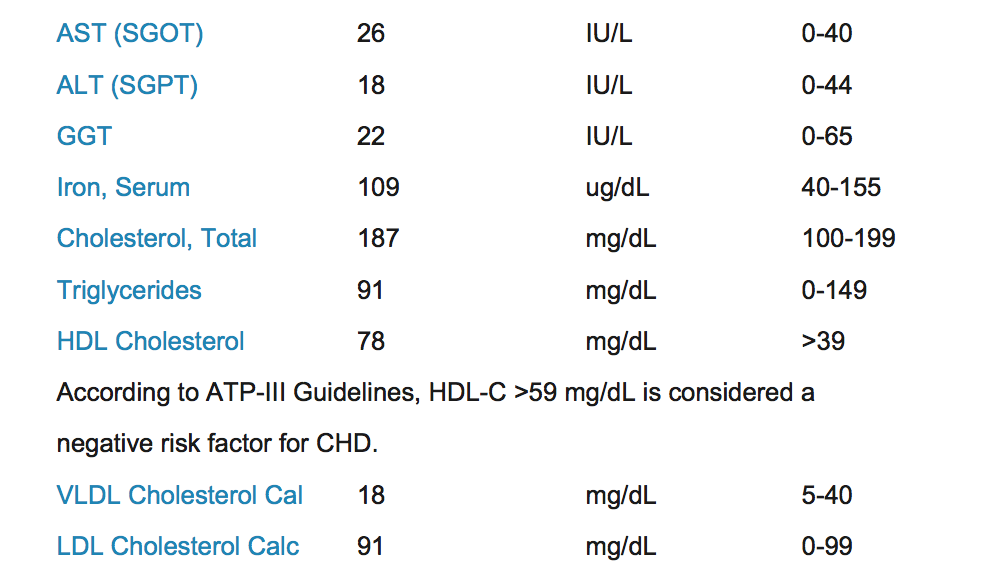
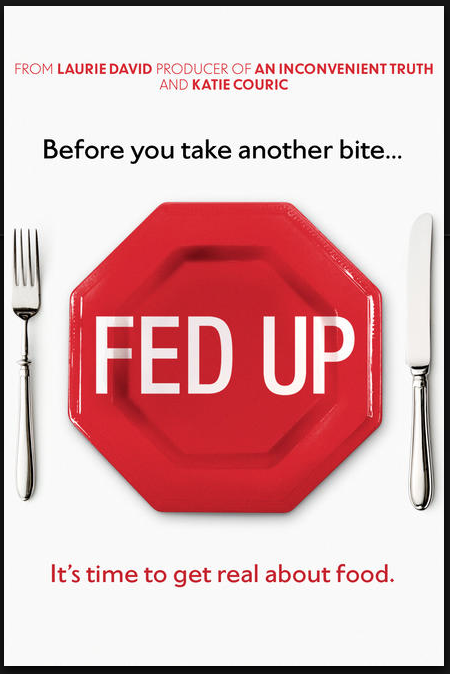
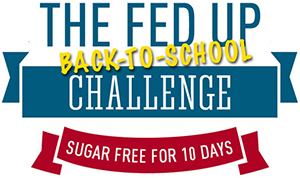
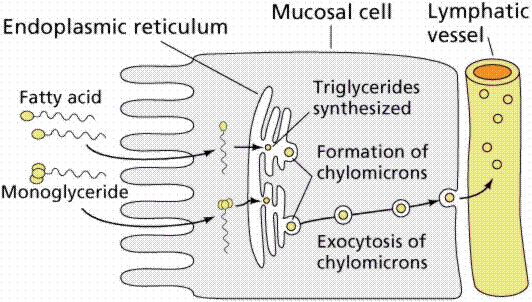
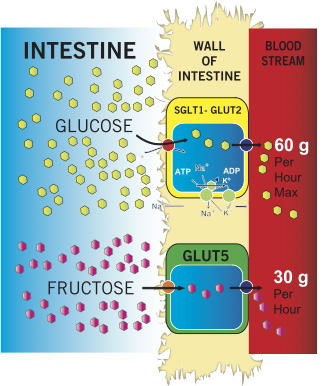
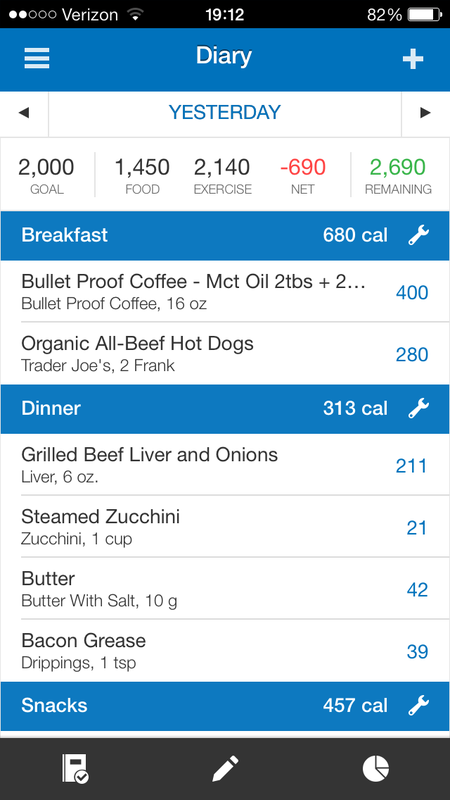
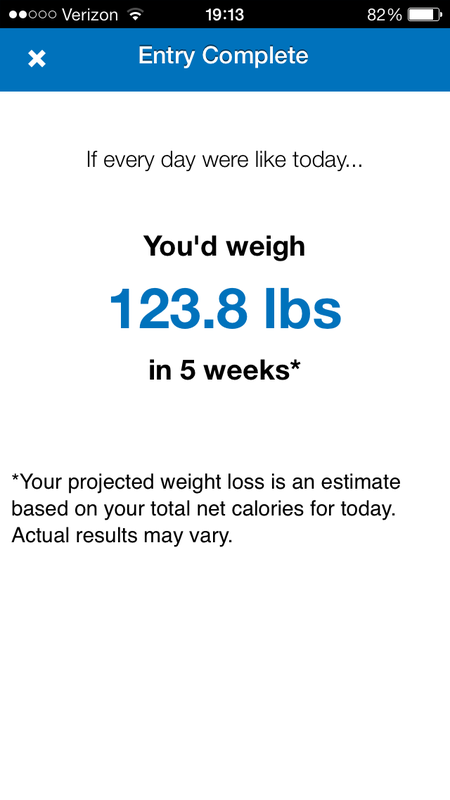
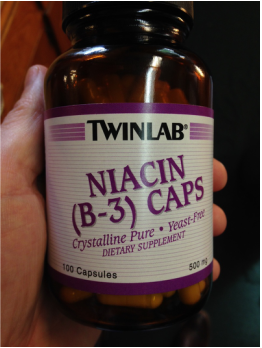
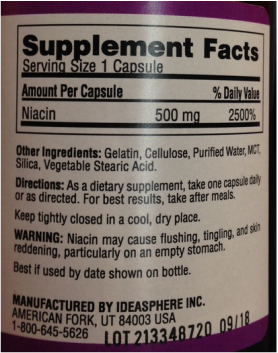
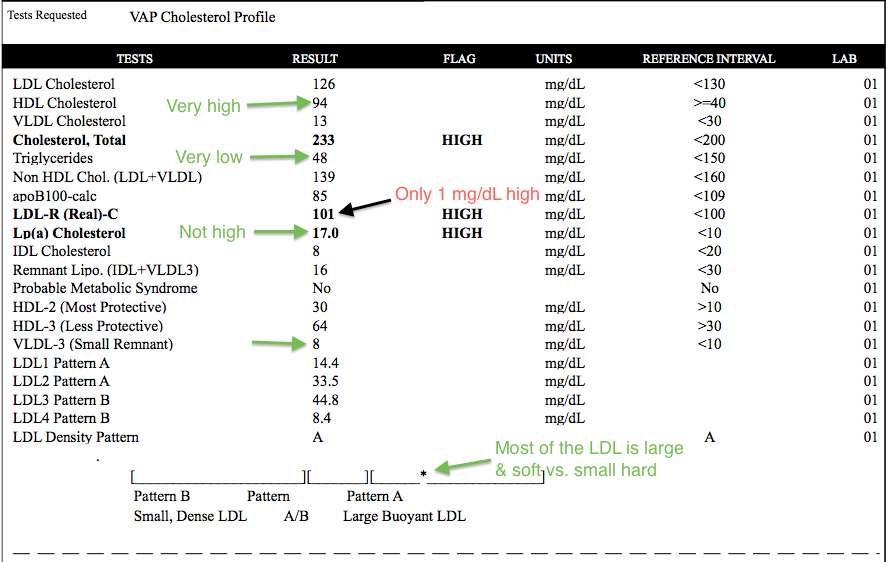

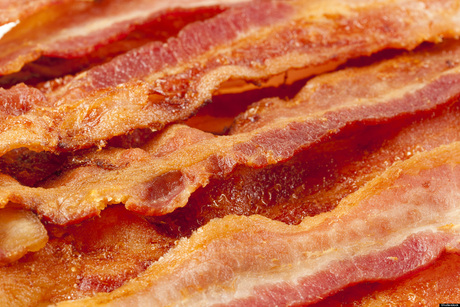
 RSS Feed
RSS Feed